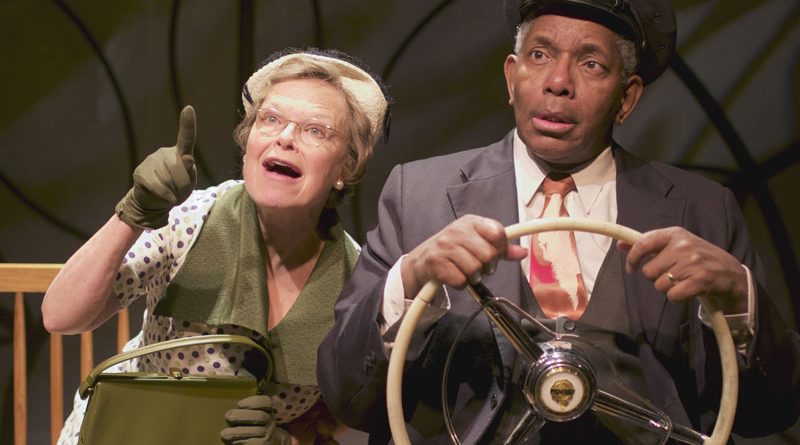Driving Miss Daisy a journey of friendship
By Driving Miss Daisy a journey of friendship
 Driving Miss Daisy opened at Rosebud Theatre April 6, the inaugural show of the theatre’s 35th season.
Driving Miss Daisy opened at Rosebud Theatre April 6, the inaugural show of the theatre’s 35th season.
Miss Daisy, played by Judith Buchan, is an aging Jewish widow who doesn’t want to admit she’s too old to drive. And she definitely doesn’t want people to think she’s rich enough to have a driver. Over her protests, her son Boolie, played by Paul F. Muir, hires a driver named Hoke.
This is 1948, and they live in the southern United States, but it does not bother Miss Daisy that Hoke, played by Tom Pickett, is African-American. She declares she’s never been prejudiced. She does, however, have clear and narrow expectations of “those people.”
Miss Daisy is slow to soften, but Hoke is wise and patient. And 25 years later, when Miss Daisy is elderly enough to need much more than a driver, Hoke is still there.
Buchan, Muir and Pickett give skilled performances, and I had to remind myself that Miss Daisy, Boolie and Hoke aren’t real people. Yet maybe they are – because playwright Alfred Uhry has conveyed keen observations of how people relate to each other.
He’s captured in Miss Daisy the vulnerability and determined independence we often see in those who need help. In Boolie, we see the love and frustration that often co-exist in those who try to give it.
He also conveyed the preciousness of each human being, including illiterate Hoke, whose society offers him few rights and little respect, and grouchy Miss Daisy, who’s long on pride and short on kindness.
Driving Miss Daisy moved me to tears more than once, but I also laughed with the rest of the audience all the way through the show.
One of the highlights of the production is Matthew B. Golden’s Foley sound design. More than once, I looked for a barking dog that wasn’t there. And on each drive Miss Daisy takes with Hoke, I heard the car door slam and felt the bump at the end of the driveway.
After the show, I asked Golden about his process. This production, he said, has over 100 sound cues. Their design was “part planning, part creative input from discovery and part just accident.”
One happy accident was in the opening scene, where Miss Daisy has just crashed her car.
“The end of that crash has a blinker, kind of ba-kum, ba-kum, ba-kum,” Golden said. “(Director Morris Ertman) loved that, because he said it sounds like a clock. I was thinking of putting a clock in that next scene, so we (could) just transition the blinker into the clock. And the clock is a metaphor for the beginning of the end … a metaphor for life.”
For car sounds, Golden started with sounds from specific vehicles, until he realized the story isn’t primarily about cars.
“It’s about the journey of this friendship,” he said.
He also had to use car sounds that “make space for the dialogue,” which meant “chopping off all the middle and high frequencies where the human voice sits.”
Ultimately, he said, “The sound is only there to help serve the story.”
Hear and see the story of Driving Miss Daisy playing now through May 19, in Rosebud’s Opera House. Tickets include a buffet designed by Rosebud’s new chef, Ken Onizaki. Go to rosebudtheatre.com or call 1-800-267-7553 for tickets.

